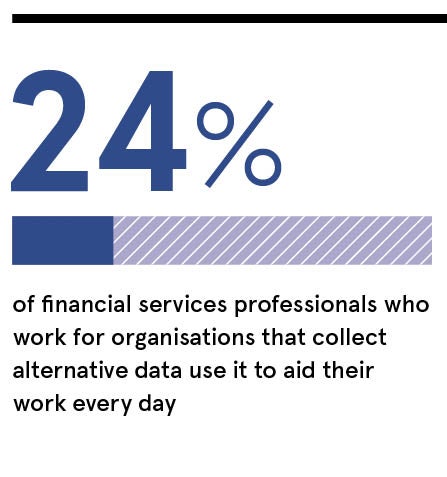Data has never been more freely available or more abundant. In fact, according to research by IBM, an astounding 90% of all web data was generated in the preceding two years. The truth is that data is not the ‘new oil’ as is often claimed. Instead, it’s more like water. This is due to its sheer volume and because its availability is fast becoming crucial to the survival of businesses and organisations worldwide.

Data-driven decision-making has long been an established practise in successful organisations. However, thanks to this public web data explosion, many are reducing their reliance on traditional data sources like market forecasts or earnings reports. Instead, they’re accessing up-to-the-minute alternative data from the world’s largest database – the internet.
Sectors including ecommerce and travel have been relying on web data for several years. Meanwhile others, such as financial services, are just now harnessing the power of web data, and tapping into it as part of their day-to-day activities. Why? For the simple reason that accessing public data enables fast, accurate decision-making – a necessity for many businesses navigating the rapid market shifts that have become our reality.
What is alternative data?
In the context of financial services, alternative data – also known as alt-data – refers to information that doesn’t come from traditional sources (for example Companies House, broker forecasts or financial records). This is extremely broad in scope and can include social media posts (used to measure consumer sentiment), satellite imagery (to detect footfall), weather reports (to predict the likelihood of extreme weather events), and so on.
A huge quantity of alt-data is publicly available across the internet and can be retrieved using forward-thinking data-driven technology and tools. Financiers are increasingly relying upon these to support their decision-making and strategic planning.
To make the most of web-based alt-data, consistency is key. For instance, a bank looking to invest in a particular business won’t be able to accurately gauge its public image from just 24 hours of social media data – a longer-term approach is needed. Plus, with enormous amounts of data being generated online, it’s crucial to set up exacting parameters for data collection to avoid getting lost in the noise.
Alternative data as an ESG enabler
One growing use of alt-data is in the financial services sector, where it is increasingly used to evaluate the environmental, social, and corporate governance (ESG) credentials of businesses In fact, the majority (88%) of financial services data leaders who participated in a 2021 survey said that their organisation viewed measuring and reporting on ESG performance as either a ‘key metric’ or ‘of moderate importance’.
Today’s financiers have realised that channelling investment into businesses that contribute towards positive change in the world is not only morally good but can help to ensure the long-term performance of their investments. Doing so can also mitigate risk, boost their institutional reputation and attract new clients. In short, ESG is a money maker.
There are many ESG ratings providers out there. Most use their own unique formula to calculate a single ESG score. These one-and-done scores can be a helpful starting point, but they don’t give investors a comprehensive view into the ESG risks of investing in a particular organisation. To take just one example, some standardised ESG rankings place tobacco companies above large tech or financial services businesses. This is a one-sided assessment, to say the least.
As such, many banks and financial institutions are building proprietary ESG analysis and reporting systems, powered by web data tools. These enable financiers to determine which ESG factors they consider most important, and how they are weighted.
Looking forward, as the speed with which data is generated intensifies, so too will businesses’ dependence on it – not just in financial services but across all sectors. As more businesses seek to access web data, this exciting new information source will no doubt continue to shape how the world does business through the next decade.
For more information please visit brightdata.com
Sponsored by
Data has never been more freely available or more abundant. In fact, according to research by IBM, an astounding 90% of all web data was generated in the preceding two years. The truth is that data is not the ‘new oil' as is often claimed. Instead, it's more like water. This is due to its sheer volume and because its availability is fast becoming crucial to the survival of businesses and organisations worldwide.

Data-driven decision-making has long been an established practise in successful organisations. However, thanks to this public web data explosion, many are reducing their reliance on traditional data sources like market forecasts or earnings reports. Instead, they’re accessing up-to-the-minute alternative data from the world’s largest database – the internet.



